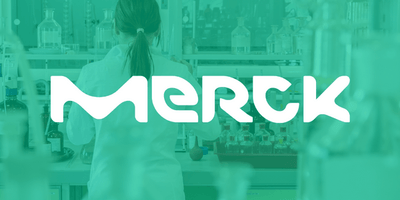In the pharmaceutical industry, Standard Operating Procedures (SOPs) and work instructions are essential for maintaining quality, ensuring compliance, and guiding employees through complex processes. However, these documents are often long, difficult to navigate, and prone to misinterpretation. This not only leads to inefficiency but can also increase the risk of non-compliance and errors.
Digitalizing and simplifying these procedures is crucial for improving operational efficiency, reducing training time, and minimizing human error. In this blog, we will outline five best practices to help pharmaceutical companies streamline their SOPs and procedures using digital tools. These practices will focus on the key principles that ensure your documentation is effective, user-friendly, and accessible to everyone involved in the process.
1. Categorize and Map Content for Clarity
A common challenge with SOPs is the overwhelming amount of information packed into one document. Often, procedures mix "why", "what", "who", and "how" into one long narrative, which can confuse employees and make it harder to extract critical information.
Best Practice: Categorize your documentation into three clear content types:
- "Who does what" content – This should be included in your SOPs to define roles and responsibilities clearly.
- "How to" content – This should be found in your Work Instructions, where specific steps of tasks are outlined in detail.
- Educational content – This belongs in training materials, where background knowledge and concepts can be explained in a simpler format.
By mapping content into these categories, it becomes easier to navigate and more intuitive for employees to use. Digital tools like Speach can help automate this categorization and ensure each piece of content is placed in the correct document type, making your SOPs clearer and more accessible.
2. Leverage Business Process Mapping Tools
In the past, creating and managing business process maps was a manual, paper-based effort that could be time-consuming and error-prone. This is particularly challenging when SOPs need to describe complex processes with many stakeholders and touchpoints.
Best Practice: Use digital business process mapping tools to map roles, responsibilities, and tasks. A RACI (Responsible, Accountable, Consulted, Informed) matrix is a great way to ensure everyone knows their responsibilities within each process.
Speach can help you digitize your business process maps and integrate them with the corresponding SOPs and work instructions. This ensures that roles and tasks are clearly defined and linked to actionable steps, helping employees understand their responsibilities quickly and accurately.
3. Simplify Instructional Content with Microlearning and Videos
Traditional SOPs often rely heavily on text and images, which can be overwhelming and difficult to follow. Long-form text can also lead to misinterpretation and mistakes, especially when complex tasks need to be explained in detail.
Best Practice: Create instructional videos and microlearning modules to explain complex tasks in a simplified and engaging way. Short, targeted videos are easier to understand and can be consumed quickly, providing employees with on-demand training at the point of need.
Speach offers an easy-to-use video creation tool that allows you to produce high-quality instructional videos without needing technical expertise. You can draft scripts directly from existing documentation, film short demonstrations, and integrate them seamlessly into your digital SOPs. This significantly reduces the effort needed for training while ensuring that complex procedures are explained in a user-friendly way.
4. Design a Digital Document Architecture for Easy Access
One of the biggest challenges with SOPs is the structure. Traditional SOPs often include too much information in a single document, making it difficult for employees to find what they need when they need it. With digital tools, you can create a streamlined architecture that links related documents together, providing employees with a more intuitive experience.
Best Practice: Create a clear, digital architecture where each SOP covers a specific end-to-end process, and every role has its own work instruction. Each SOP should also include links to related documents and training materials, so employees can quickly navigate to the resources they need.
Speach allows you to design SOPs that are modular, with the ability to link relevant work instructions, process maps, and training materials directly within the document. This not only simplifies the process but ensures that employees have everything they need at their fingertips without having to sift through multiple documents.
5. Transition to a Paperless, Digital Environment
While many pharmaceutical companies still rely on paper-based instructions, transitioning to a fully digital system is essential for improving efficiency and compliance. Paper-based procedures are difficult to update, store, and track, which can lead to outdated information being used in critical processes.
Best Practice: Move towards a paperless environment by digitizing your SOPs and work instructions. Digital SOPs can be easily updated and maintained, ensuring that employees always have access to the most current information. Furthermore, digital documents are fully searchable, reducing the time spent searching for relevant information.
Speach can help facilitate this transition by converting paper-based documents into digital formats that are accessible from any device, including tablets and smartphones. This allows employees to access up-to-date SOPs and work instructions at any time, reducing the risk of non-compliance and improving overall efficiency.
Conclusion
Digitalizing and simplifying SOPs and work instructions is a critical step toward improving operational efficiency and ensuring compliance in the pharmaceutical industry. By following these five best practices – categorizing content, leveraging digital business process maps, simplifying instructional content with videos, designing a clear digital architecture, and transitioning to a paperless system – pharmaceutical companies can streamline their procedures and make their documentation more effective and user-friendly.
Speach provides the tools and resources to help you transform your SOPs into digital, bite-sized, and easily accessible content. The digitalization of your documentation is not just about reducing paper – it's about making your processes more efficient, accessible, and aligned with modern operational needs.





